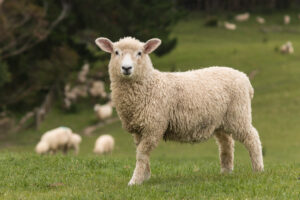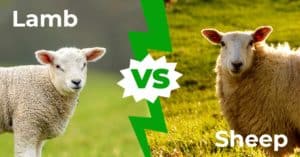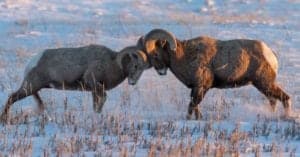Sheep, lambs, and rams are mentioned over 500 times in the Bible, more than any other animal. They were a huge part of life for people in the Middle East and many other parts of the world. Outside ranching areas, though, many people today don’t know much about sheep. This can hinder our understanding of sheep as an example or symbol of a spiritual lesson. In this article, we’ll look at the significance and symbolism of sheep in the Bible.
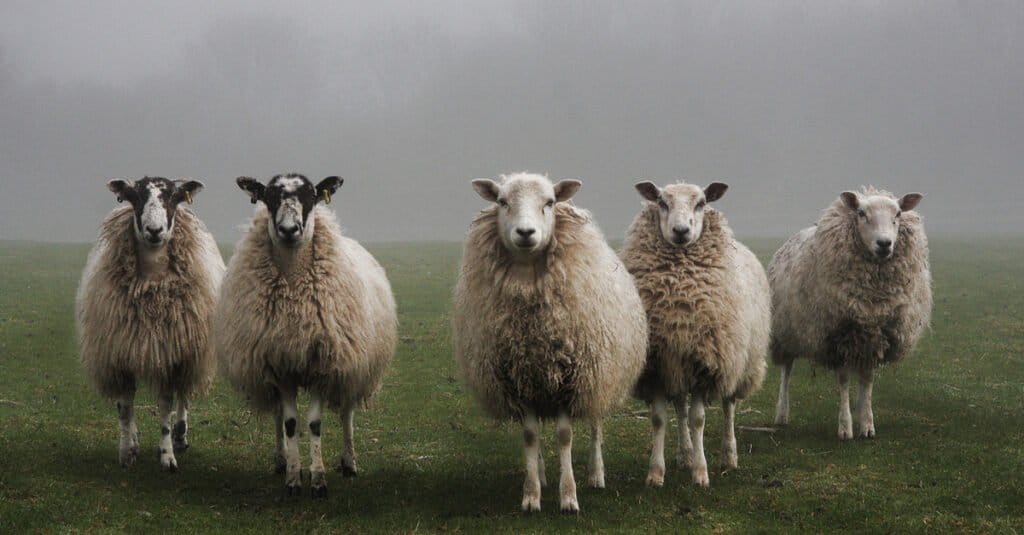
In the Bible, sheep represent God’s people.
©Paul Steven/Shutterstock.com
The Significance of Sheep

The Natural Environment of Israel
Most of the Bible takes place in Israel, a small, hilly strip of land. It’s located between the Mediterranean Sea and the Dead Sea. In the south, lies the parched Negev Desert. To the north, are snowy mountains and the cooler highlands of Galilee with some of the better farmland. The overall climate is humid subtropical, but rainfall is not always reliable. Fog from the Mediterranean is an important source of precipitation to sustain agriculture.
Because so much of the land is rugged, semi-arid, and subject to drought, many rural people sustained themselves by raising flocks. Sheep could be herded from place to place where grass and water were available. Additionally, sheep had to relocate for the benefit of the land. If they stayed in one area too long, they would eat the vegetation to the roots.
Villagers often treated shepherds with mistrust and disdain. They had the unpleasant odor of sheep about them and were considered to be thieves and liars. This made it all the more remarkable that shepherds were the first to learn of Jesus’ birth via angelic visitation.
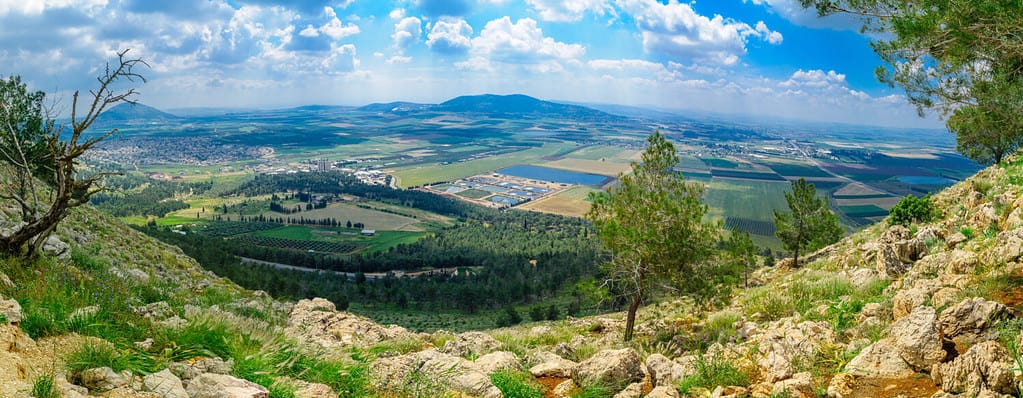
Much of the landscape of Israel is hilly and semi-arid, more suitable for herding animals than agriculture.
©RnDmS/Shutterstock.com
Making a Living with Sheep
Sheep played a crucially important role in an economy where most people were living at a subsistence level. Their wool was shorn, every year, spun into thread, and woven into cloth. Cloth was used not only for clothing but tents, blankets, bags, and other everyday necessities. Because sheep were usually white, their wool could be dyed in different colors easily. After they were killed, their hide could be tanned into leather with innumerable uses for durable goods. These included sandals, ropes, saddles, harnesses, whips, and decorative items. Sheepskins could also be crafted into containers for water, wine, or other liquids. Male sheep, called rams, had horns that were hollow and were used as drinking vessels and for pouring oil. They could also be blown like a trumpet to signal a warning, direct troops in battle, or celebrate festive occasions.
Sheep were also, of course, an important source of food. Sheep can be milked, and this was a common practice for people living on the verge of malnutrition. The milk could also be curdled and made into curds and whey, yogurt, or cheese. Sheep’s milk provided a constant food supply without having to kill the animal. However, sheep were killed for meat as well. For poor families, meat was a luxury eaten infrequently, such as at religious feasts like Passover or at weddings. Lambs were often preferred over adult sheep, as their meat was tender. They were also the right size to feed a family at one meal. This was important since there was no refrigeration to keep them. Even the manure of sheep was not wasted; it was dried and burned for winter fuel. Few animals were more useful to ancient families than sheep.

In the ancient Near East, wool was a vital renewable resource provided by sheep.
©Oleg Znamenskiy/Shutterstock.com
The Value of Sheep
A few cultural practices underscore just how valuable sheep were. One is that they were used as a measure of wealth. Large herds of sheep and other livestock were seen as signs of a blessed, prosperous family (Job 1:1-3). Secondly, they were seized as spoils of war. Nomadic raiders from the desert would sometimes sweep into border regions to steal flocks. After a war between nations, the victors would often take the defeated country’s animals as spoils of war. For example, the Bible says that when Israel defeated the Midianites, they took 675,000 sheep as part of the plunder (Numbers 31:32).
Finally, sheep were widely used in many cultures for animal sacrifices in religious ceremonies. In ancient religions, a sacrifice involved giving up something very valuable in exchange for answered prayers. Many ancient cultures even sacrificed people: prisoners of war, local residents, or even their own children. For sheep to be seen as sacrificial animals meant that they were sufficiently valuable, and their loss was great enough to gain a deity’s attention and blessing.

Owning large herds of sheep was a mark of wealth and status in the ancient Near East.
©Jesus Keller/Shutterstock.com
The Symbolism of Sheep
Because sheep were so ubiquitous in the Middle East, everyone was familiar with their qualities and behavior. This made them a good object lesson when Jesus and the prophets wanted to use them as an illustration of the relationship between God and his people. An example of this is Psalm 100:3, which says that we are “the sheep of his pasture,” or Matthew 9:36, in which Jesus felt compassion for the crowds who followed him because they were like “sheep without a shepherd.”
Sheep Symbolize God’s People
So how are sheep and people similar? Each of the following is an example of how sheep behave and how they relate to a shepherd that the Bible uses as an illustration of humans’ relationship with God.
- Without leadership, sheep scatter and get lost.
- Sheep are in danger from predators, like wolves, bears, or lions.
- They need a shepherd to help provide for them and rescue them from harm.
- Some shepherds don’t care about the sheep and abuse or neglect them.
- Sheep will follow the voice of a good shepherd as he calls them each by name.
- A shepherd leads them from place to place to show them where the good grass and water are.
- The shepherd counts his sheep and knows whether even one is missing.
- When one is lost, the shepherd searches diligently until it is found, and brings it home.
- A shepherd would lay down at the entrance of a rough enclosure to guard the sheep, literally making himself the “gate” of the pen. Sheep have to pass the shepherd to be allowed in the pen.
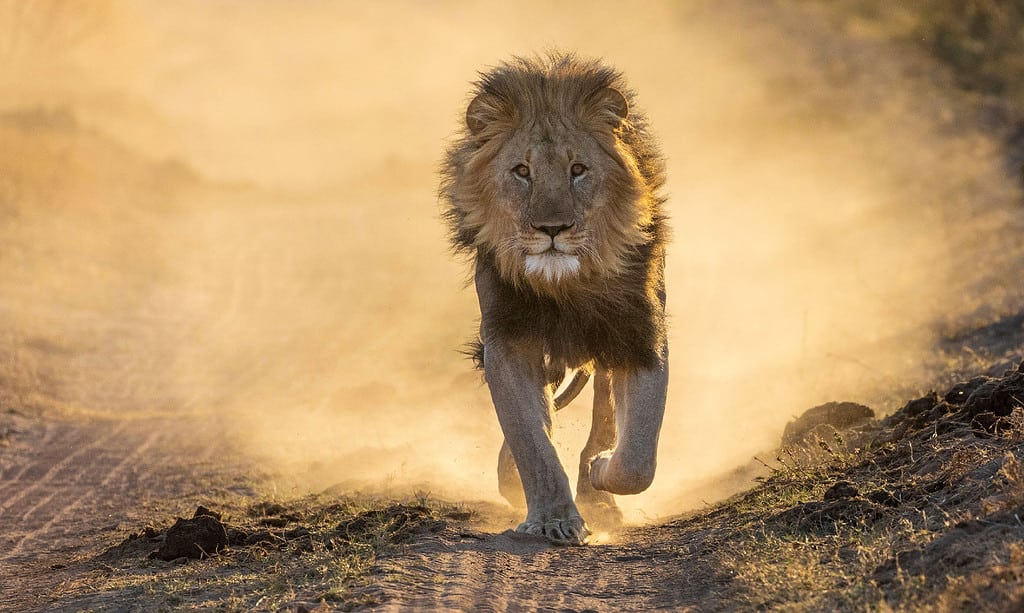
Lions were a threat to sheep in Israel and across the Middle East in ancient times.
©iStock.com/Wirestock
A Lamb Symbolizes Innocent Sacrifice
Lamb as an Animal Sacrifice
In ancient times, Israel and surrounding countries practiced animal sacrifice. Often lambs were used for these sacrifices. They represented innocence and meek humility, as they did not protest when being handled by people, even to the point of being slaughtered. In Israel, the sacrifice of a lamb was a reminder that sin and rebellion against God were to be taken seriously and had a tragic price. A particularly important holiday when lambs were eaten was the annual Passover, which commemorated the liberation of Israelite slaves from Egypt. Israelite families wiped the blood of a sacrificial lamb over the doorframes of their homes and ate the meat together while God “passed over” their houses but brought judgment and death to the Egyptians. Many Jewish families today still observe Passover as their most sacred holiday.

Jewish people around the world continue the annual tradition of Passover.
©Inna Reznik/Shutterstock.com
Jesus as a Sacrificial Lamb
Ideas related to the innocence and purity of a sacrificed lamb are found in both the Hebrew Bible (which Christians call the Old Testament), and the Christian New Testament. However, the New Testament teaches that Jesus symbolically became the final sacrificial lamb. He lived a blameless life and was innocent of the charges brought against him, yet was killed anyway. Like a lamb, silent when being led away to slaughter, he didn’t protest, fight, or try to defend himself when he was taken to be executed (Acts 8:32).
In so doing, the New Testament writers say that he took away the sins of the world so that they could be forgiven by God (John 1:29). In the final book of the Bible, Revelation, Jesus is depicted in heaven as a living lamb that looked like it had been killed, but now has horns (representing power) and standing on the throne of God himself (Revelation 5:6). This vision turns the idea of lambs as weak on its head by showing Jesus in the most supreme position of power in the universe at the end of time.

Christian teachings compare Jesus to a sacrificial lamb; one that takes away the sin of the world.
©spetenfia/Shutterstock.com
The Bible’s Most Popular Sheep Chapter
One chapter of the Bible has been immensely popular with Jewish and Christian believers for millennia. People often memorize and recall it or pray it as a prayer in times of fear and uncertainty. It is the 23rd Psalm, written by David, a shepherd boy who became the most celebrated king of Israel. Some key themes to notice are what the shepherd provides, how he protects, how he gives honor, and how he gives hope for the future. This is a good illustration of how a biblical writer, based on his personal experience tending sheep, draws symbolic parallels to God’s people.
Psalm 23 (adapted from King James Version):
The Lord is my shepherd; I shall not want. He makes me lie down in green pastures: he leads me beside the still waters. He restores my soul: he leads me in the paths of righteousness for his name’s sake. Yea, though I walk through the valley of the shadow of death, I will fear no evil: for you are with me; your rod and your staff comfort me. You prepare a table before me in the presence of my enemies. You anoint my head with oil; my cup runs over. Surely goodness and mercy shall follow me all the days of my life: and I will dwell in the house of the Lord forever.
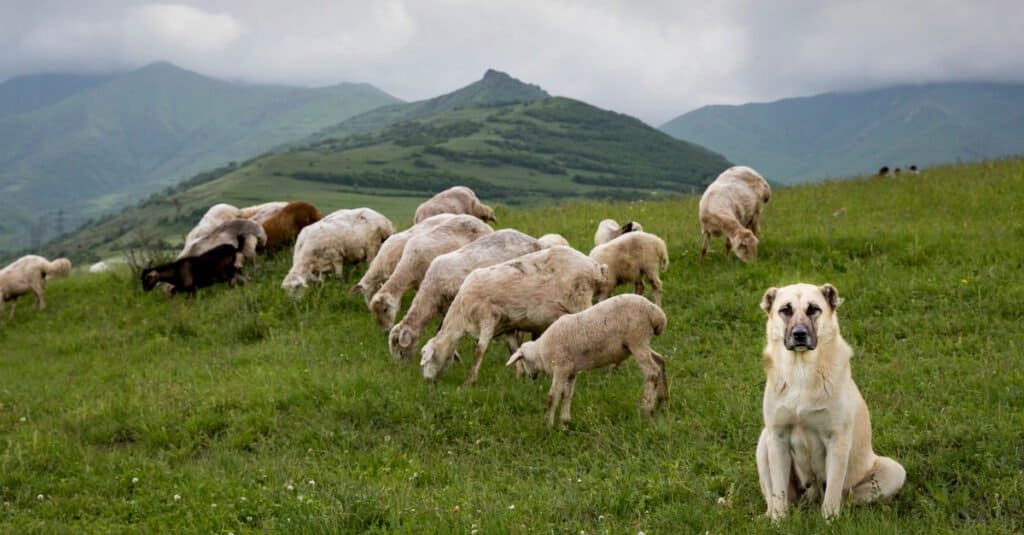
The 23rd Psalm depicts God’s people as enjoying green pastures under his leadership.
©Katiekk/Shutterstock.com
What Animal Would You Choose?
Translators of the Bible have to make decisions about whether to use the term “sheep” even if it is unfamiliar in other cultures. For example, some have argued that pigs, cows, or even seals in some cultures provide for people’s physical needs in the all-encompassing ways sheep do in the Middle East. Some of these examples might miss the mark in the sacrificial symbolism of sheep and lambs, though. What do you think? What animal is more familiar to you and reminds you of some of the characteristics of sheep? A dog maybe? What life lessons do you think we could learn by observing your chosen animal and its interaction with people?
The photo featured at the top of this post is © patjo/Shutterstock.com
Thank you for reading! Have some feedback for us? Contact the AZ Animals editorial team.



